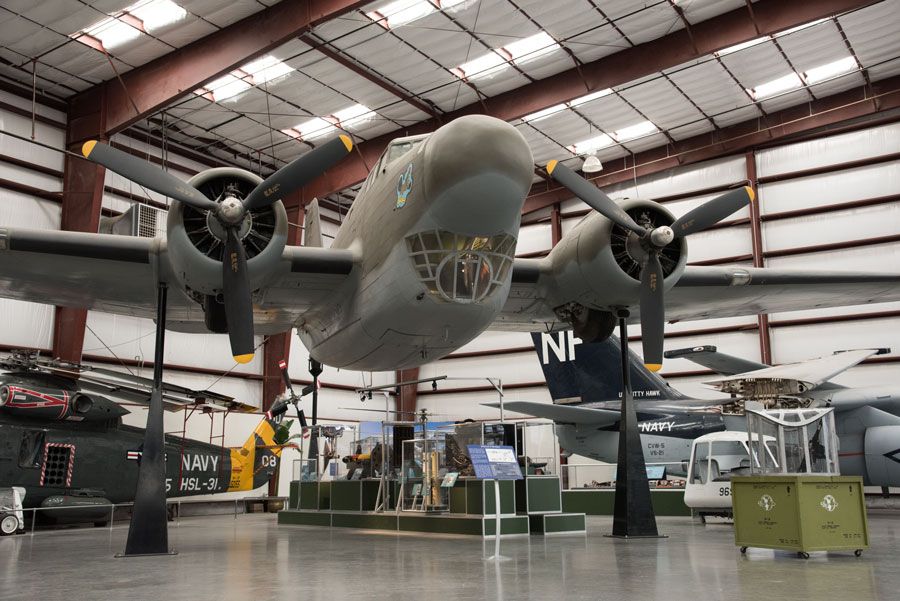Douglas B-18B BOLO
Designed in response to a 1934 U.S. Army Air Corps requirement for a replacement for the B-10, the B-18 was based on the Douglas DC-2 airliner using similar wings, tail and engines. The Bolo entered production in 1936 and by 1940 most of the bomber squadrons in the Air Corps were equipped with B-18s. When the United States entered World War II the B-18 was obsolete as a bomber and was in the process of being replaced by the B-17, however 122 were modified with a nose mounted radar replacing the bombardier and magnetic anomaly detectors for locating submarines installed in the tail and called B-18B. These aircraft served in the Caribbean and Atlantic hunting for German submarines through 1943. Most B-18s were retired to transport duties for the remainder of the war and were then sold as surplus in 1945 and 1946.
Wingspan | 89 ft 6 in. |
Length | 57 ft 10 in. |
Height | 15 ft 2 in. |
Weight | 27,673 lbs (loaded) |
Maximum Speed | 215 MPH |
Service Ceiling | 23,900 ft |
Range | 3,660 miles |
Engines | Two Wright R-1820-53 radials with 850 horsepower each |
Crew | 6 |
Manufacturer
Douglas
Markings
25th Antisubmarine Wing, 4th Antisubmarine Squadron, Langley AAF, Virginia, July 1942
Designation
B-18B
Registration
N66267
Serial Number
38-593
